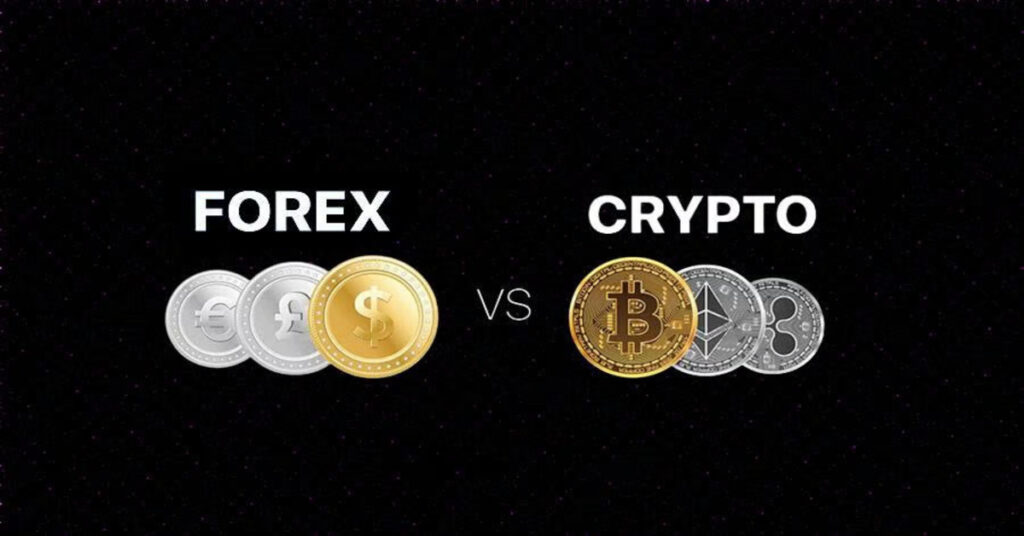US Dollar Price Action Setups: Analyzing DXY, EUR/USD, and GBP/USD Trends
The US dollar has been a major focus of the financial markets in recent times. With the US economy recovering from the pandemic, there has been much speculation about the future of the US dollar and its impact on the global economy. This article will explore the current state of the US dollar and provide insights into potential price action setups for major currency pairs such as DXY, EUR/USD, and GBP/USD.
The US dollar index (DXY) has been in a state of flux in recent months. Despite the Federal Reserve’s decision to taper its asset purchases, the US dollar has remained weak against other major currencies. This has led to speculation that the US dollar may be losing its status as the world’s reserve currency. However, there are also arguments that the US dollar is undervalued and that it may be due for a rebound in the near future.
In this article, we will analyze the major currency pairs such as EUR/USD and GBP/USD to provide insights into potential price action setups. We will also explore the impact of key economic events on the US dollar and its major currency pairs. Additionally, we will provide technical analysis and chart patterns to help traders make informed decisions. Finally, we will analyze market sentiment and provide future predictions for the US dollar and its major currency pairs.
Key Takeaways
- The US dollar has been weak against major currencies despite the Federal Reserve’s decision to taper its asset purchases.
- Technical analysis and chart patterns can provide insights into potential price action setups for major currency pairs such as DXY, EUR/USD, and GBP/USD.
- Key economic events and market sentiment can impact the US dollar and its major currency pairs, and traders should stay informed to make informed decisions.
US Dollar and DXY Overview
https://www.youtube.com/watch?v=GdD2HU-GWqk&embed=true
The US Dollar Index (DXY) is a measure of the value of the US dollar relative to a basket of foreign currencies. The DXY is heavily weighted towards the euro, which accounts for 57.6% of the index. Other currencies included in the DXY basket are the Japanese yen, British pound, Canadian dollar, Swedish krona, and Swiss franc.
The US dollar has been experiencing mixed price action against major currencies such as the euro, British pound, and Japanese yen. The DXY has been trading within a range, with support at 95.60 and resistance at 96.70. The bulls and bears have been battling it out within this range, with no clear trend emerging in the short term.
The US dollar has been supported by a strong US economy and the Federal Reserve’s monetary policy. However, concerns about global growth and trade tensions have weighed on the US dollar. The US dollar has also been impacted by the US-China trade war, with the Chinese yuan weakening against the US dollar.
In terms of technical analysis, the DXY has been trading within a descending triangle pattern. This pattern is characterized by a horizontal support level and a descending trendline. If the DXY breaks below the support level, this could indicate a bearish trend for the US dollar. On the other hand, a break above the descending trendline could indicate a bullish trend for the US dollar.
Overall, the US dollar and DXY are in a state of uncertainty, with no clear trend emerging in the short term. Traders and investors will be closely watching key support and resistance levels on the DXY chart to gauge the direction of the US dollar.
Major Currency Pairs Analysis
https://www.youtube.com/watch?v=L7DmBmm5Mc8&embed=true
The US Dollar is currently experiencing a bearish move on the daily chart against major currency pairs such as EUR/USD, GBP/USD, USD/CAD, and USD/JPY. The 1.2500 level is a key resistance for GBP/USD, while EUR/USD is working towards fresh two-month highs. It is worth noting that there is a wide area of resistance for GBP/USD, with Fibonacci levels at 1.2481 and 1.2459. There is also a prior swing at 1.2428.
USD/CAD has shown a strong response from support at the Fibonacci level at 105.38, which is the 38.2% retracement from the same study that helped to set the high at the 50% marker earlier in the month. USD/JPY is also experiencing a bearish move, and traders should keep an eye on the 114.00 level, which is an important support level for the pair.
In terms of price action, the US Dollar has continued to sell-off after last week’s CPI report. This pattern is similar to what happened last year, and it is worth noting that the US Dollar is currently putting in its largest bearish move on the daily chart since last November, around the time that USD bears began to take-over.
Overall, the current market conditions for major currency pairs are bearish, and traders should be cautious when making trading decisions. It is important to keep an eye on key resistance and support levels, as well as any potential bullish or bearish reversal patterns. It is also important to keep an eye on cable (GBP/USD), as it is currently experiencing a wide area of resistance.
Key Economic Events Impact
https://www.youtube.com/watch?v=FFTq7n_dn-k&embed=true
The US Dollar has been impacted by various economic events in recent times. The Federal Open Market Committee (FOMC) has been one of the major drivers of the US Dollar’s price action. The FOMC decides the US interest rates and its decisions have a significant impact on the US Dollar’s value. The Fed has been cautious in raising interest rates, which has led to a decline in the US Dollar’s value.
Another significant economic event that affects the US Dollar is inflation. The US CPI report is released every month and provides an insight into the inflation rate in the US. High inflation rates lead to a decrease in the US Dollar’s value, while low inflation rates lead to an increase in its value.
The European Central Bank (ECB) is another entity that has an impact on the US Dollar. The ECB’s decisions on interest rates and monetary policy affect the Euro’s value, which, in turn, affects the US Dollar’s value. The ECB’s quantitative easing program has also had an impact on the US Dollar’s value.
Non-Farm Payrolls (NFP) is another significant economic event that affects the US Dollar’s value. The NFP report provides an insight into the number of jobs created in the US. Strong job creation leads to an increase in the US Dollar’s value, while weak job creation leads to a decrease in its value.
The Bank of Japan (BOJ) is another entity that has an impact on the US Dollar’s value. The BOJ’s decisions on interest rates and monetary policy affect the Yen’s value, which, in turn, affects the US Dollar’s value. The BOJ’s quantitative easing program has also had an impact on the US Dollar’s value.
Overall, the US Dollar’s value is affected by various economic events, including the FOMC’s rate decisions, inflation rates, ECB’s monetary policy, NFP reports, and BOJ’s monetary policy. Traders and investors need to keep track of these events to make informed decisions about their investments.
Technical Analysis and Chart Patterns
https://www.youtube.com/watch?v=FcJMDmo7VN0&embed=true
Technical analysis is an essential approach to trading that involves the use of charts and other technical indicators to identify potential trading opportunities. In the case of US Dollar Price Action Setups, technical analysis is critical in identifying chart patterns, trend lines, and Fibonacci levels that can provide insights into the direction of the market.
One of the most common chart patterns used in technical analysis is the double top formation. This pattern is characterized by two peaks that are almost identical in height, separated by a trough. It is often seen as a bearish signal, indicating that the market may be about to reverse its trend.
Another important chart pattern is the falling wedge, which is a bullish trend reversal pattern. It is characterized by a series of lower highs and lower lows that converge into a wedge shape. This pattern suggests that the market may be about to reverse its downward trend.
Fibonacci levels are also important in technical analysis, particularly in identifying potential support and resistance levels. These levels are based on the Fibonacci sequence and are often used to identify key levels where the market may reverse its trend.
Other technical indicators that can be used in US Dollar Price Action Setups include dojis, which are candlestick patterns that indicate indecision in the market, and trend lines, which are used to identify the direction of the market.
Overall, technical analysis and chart patterns are essential tools for traders looking to identify potential trading opportunities in US Dollar Price Action Setups. By using these tools, traders can gain insights into the direction of the market and make informed trading decisions.
Market Sentiment and Future Predictions
The US Dollar has experienced a bearish move on the daily chart since last November, around the time when USD bears began to take over. The dominant theme of USD-strength is still showing symptoms of overbought behavior, and the big question at this point is whether it is ready for continuation or not.
The DXY contract, which is a composite with a 57.6% weighting in the Euro, is an important factor to consider when looking at the future of the US Dollar. If the US Dollar is going to breakdown as it did last year, it will probably need at least some help from the Euro. The Japanese Yen is also of interest here, as it is 13.6% of the DXY quote.
Looking at the rate expectations, the US Federal Reserve has already signaled that they are planning to raise interest rates in the near future. This could potentially lead to a bullish reversal for the US Dollar, but it is important to keep an eye on the rate hikes and how they affect the market sentiment.
The GBP/USD pair still has some resistance to deal with, and the 1.2500 level is an obvious level that helped mark the highs this week. The 1.2481 and 1.2459 Fibonacci levels are also important to consider. The EUR/USD pair is working on fresh two-month highs, and it will be interesting to see how the market sentiment affects the pair in the future.
In conclusion, the future predictions for the US Dollar are uncertain, and it is important to keep an eye on the market sentiment, rate expectations, and potential carry trade opportunities. The oversold condition of the US Dollar could potentially lead to a bullish reversal, but it is important to remain neutral and clear when analyzing the market.









